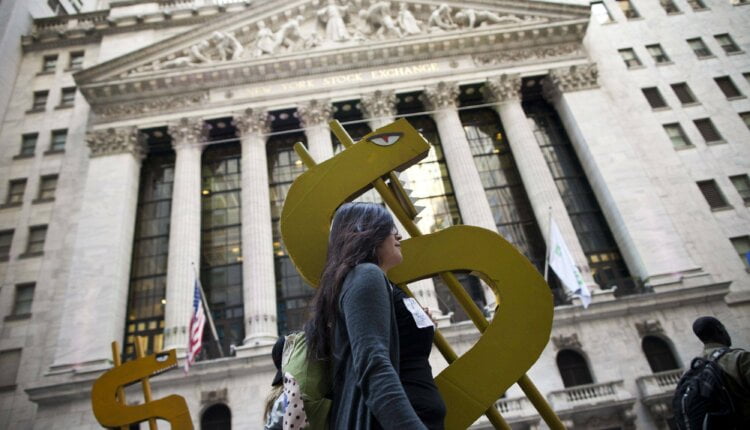Interest Rate Hikes: Federal Reserve leading developed economies to turn around, central banks around the world ushered in a “year of interest rate increase” in 2022, which is obviously the general trend.
The current reality does seem to be the same, many central banks have been unable to help Interest Rate Hikes.
Will the economy fall into recession due to the acceleration of the Federal Reserve’s tightening and the early interest rate hike?
At present, economic activity and employment indicators continue to be positive, the economy is in a recovery trend and has a certain degree of resilience, inflation is at a high level, and the monetary environment as a whole is very loose, so the possibility of raising interest rates will lead to a recession is low.
Moreover, the Fed’s interest rate hike process is generally gradual interest rate hikes, and the current interest rate level is close to the zero boundary, so it is expected that the pressure on the economy will be limited at the beginning of this round of interest rate hikes.
At the same time, it should also be noted that if the Federal Reserve’s expected management is insufficient, communication with the market is insufficient, interest rate hikes or scales are too fast, or poses a certain downside risk to the economy.

What is the impact of early interest rate hikes and early shrinkage expectations on U.S. bond interest rates?
Under the current factors such as the monetary policy tightening speed exceeding market expectations, raising interest rates, and the high market inflation will continue in the short term, it is expected that there will be great upward pressure on U.S. bond interest rates in the near future and will rise rapidly in the near future.
However, the spread of Omicron variant strains may slow down economic growth expectations, coupled with a weakening contradiction between supply and demand, suppressing inflation expectations, and expecting 10-year U.S. bond yields to rise to 1.90%.
Will USA stocks fall significantly in the first quarter of this year?
The increase in interest rate increases, the time point or greater advance of the meter shrinkage, and the faster than in the past indicate that the Federal Reserve’s monetary policy tightening speed is accelerating, risk-free interest rates may enter a rapid upward stage, suppressing the price of risky assets, and the stock market is facing adjustment.
On the other hand, supply-side restrictions are expected to be lifted in the future, which may promote economic recovery and will provide some support for the stock market.
What is the impact of the rapid rise of U.S. bonds on Chinese market?
The growing expectation of interest rate hikes may inject upward momentum into the dollar index (95.7388, -0.4946, -0.51%)and the RMB may strengthen two-way volatility in the short term under the combination of “strong exports + strong dollar”.
At present, the RMB remains strong under the support of a strong willingness to settle foreign exchange before the holiday.
It is expected that with the slowdown of willingness to settle foreign exchange after the holiday, its support for the RMB will also weaken.
Although the Federal Reserve has accelerated tightening or pushed the U.S. dollar index upward, if exports were not weak in the first half of this year, the RMB exchange rate may still stabilize at a certain central level, with a limited impact.
If global supply chains improve in the second half of this year, demand returns to normal, and developing economies such as ASEAN gradually recover, China export substitution effect may weaken, and overseas tightening is expected to become the dominant factor driving the trend of the RMB.
In this case, if the market is still in the process of tightening expectations, the RMB will be under pressure, if the market has completed the pricing of tightening expectations, and the gap between economic fundamentals and monetary policy between Europe and the United States has converged, it will lead to a lack of momentum for the U.S. dollar index to continue to rise, but It will not have much impact on the RMB exchange rate.
From a transaction perspective, the yield on 10-year U.S. bonds is currently rapidly upward and exceeds 1.7%
The United States is in the process of gradually tightening monetary policy, while the yield on 10-year mid-term bonds fluctuates low due to loose expectations.
For foreign investors, China’s looser monetary policy and abundant liquidity environment are even more Galido Chinese bonds; from the perspective of stability, the RMB exchange rate remains stable as a whole, the yield of Chinese bonds fluctuates less and Chinese bond assets are less related to other bond assets around the world, which can meet the needs of foreign investment diversification.
Therefore, even if the current interest rate spread between China and the United States has narrowed to about 110bps (January 5 data), RMB bond assets are still attractive to foreign investors. The convergence of the interest rate spread between China and the United States may disturb the pace of foreign debt purchase to a certain extent, but it is difficult to change the trend of increasing holdings.
However, the continued narrowing of the interest rate spread between China and the United States may affect the window period of domestic monetary policy easing.
In the post-epidemic cycle, China monetary policy has maintained a certain degree of independence, provided that the recovery cycle between China and overseas economies is misaligned, the relative stability of the interest rate gap between China and the United States and the strong resilience of the RMB exchange rate.
As expectations of accelerated tightening of U.S. monetary policy gradually thicker, the rapid narrowing of interest rate spread between China and the United States, and the RMB exchange rate may be more under upward pressure on the U.S. dollar index in the future, this will pose more challenges to the window of China monetary policy easing.

